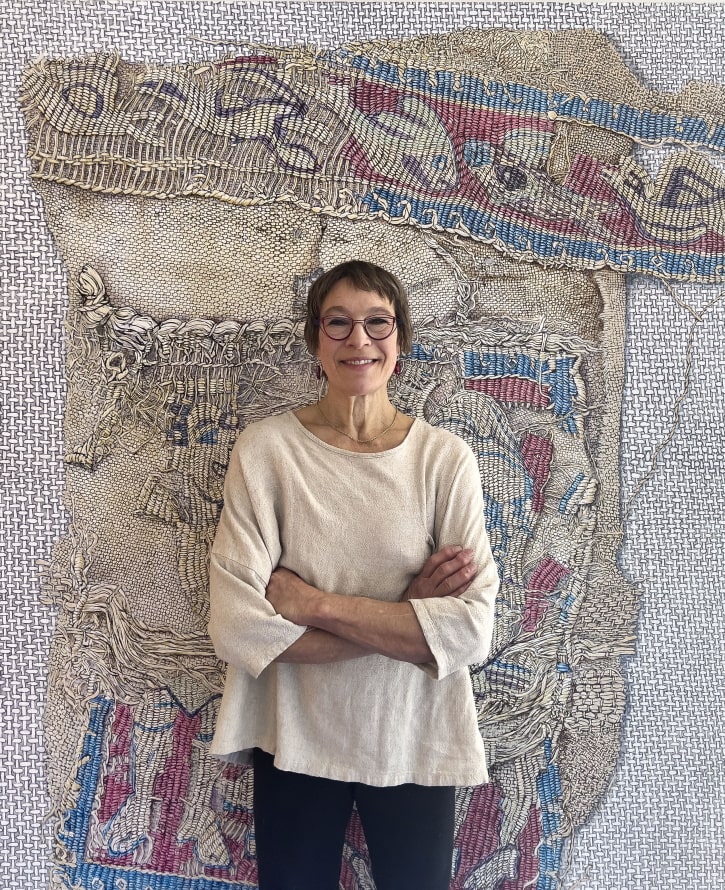Women and their role in art and society continue to be in focus at the Bode Museum. Parallel to the current exhibition “Der zweite Blick: Women”, a special exhibition by the New York artist Gail Rothschild will be presented from 1 July 2022. Egyptian textiles from the rich collection of the Museum of Byzantine Art are the source of inspiration for her new series of monumental paintings. In juxtaposition with knitted textiles from the 4th to 9th centuries, a fascinating dynamic emerges between past cultural testimonies and contemporary artistic creation.
Image above: Gail Rothschild, Portrait, 2022, © Gail Rothschild
Gail Rothschild (*1959 in New York City) lives in Brooklyn. After graduating from Yale, Rothschild began a career as a travelling artist. For museums and colleges across the United States, she created site-specific installations that explore the country’s lesser-known women’s and Native American history. In collaboration with international museums, Rothschild explores archaeological textile fragments in her paintings. For her current series of large-format paintings in acrylic on canvas, Gail Rothschild was inspired by the pictorial works of the rich textile collection of the Museum of Byzantine Art housed in the Bode Museum. “When I paint an ancient textile, I think of so many things. I am aware of its creator, the spinning of the fibre and its weaving,” Rothschild describes her motivation. “I think of the original use of the textiles and the bodies they touched. … I think of how the fabric and the once spun fibres dissolve over time. My paintings are in the tradition of vanitas paintings, they speak of time.”
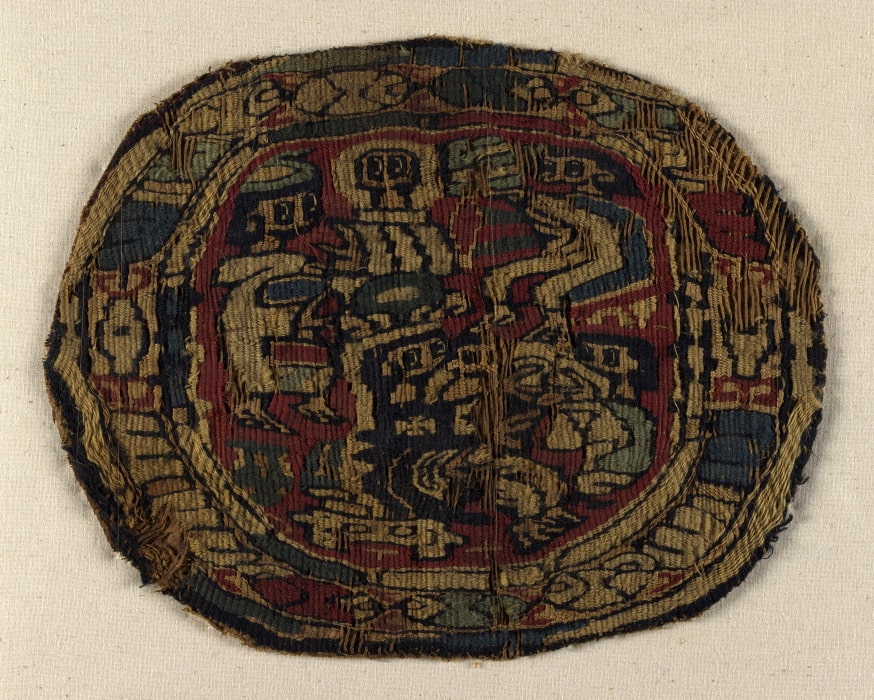
In her search for new models for her large-format works, Gail Rothschild came across the colourful, motif-rich tapestries from late ancient Egypt, which fascinated many important artists, art collectors, fashion designers and theatre people at the time of their discovery around 1900. Especially the French Egyptologist Albert Gayet and the art dealer Dikran Kelekian contributed at the time to the worldwide dissemination of these previously unknown gems. From an economic point of view, too, the timing of the discovery of the textiles could hardly have been better. In the course of industrialisation in the second half of the 19th century, arts and crafts societies and museums sprang up in Europe and North America with a growing need for sample collections as illustrative material for factory owners and craftsmen from the new professions and for interested laymen. Textiles from Egyptian tombs, whose patterns and motifs served as models for the now mechanised textile and wallpaper production, were virtually predestined for this.
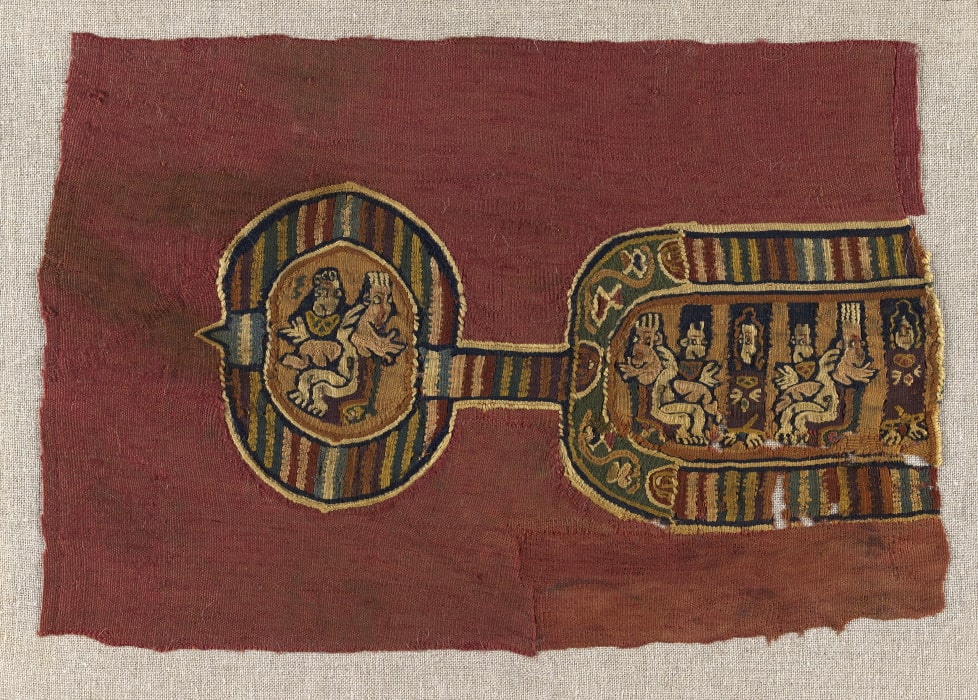
The Berlin Museum of Byzantine Art has the largest collection of late antique textiles from Egypt in Germany. It came into being in the last years of the 19th century in connection with Wilhelm von Bode’s plans to establish a department of late antique Byzantine art and everyday objects in the Kaiser-Friedrich-Museum, which was to open in 1904. The foundation was laid by over 80 textiles from the collection of the former German consul in Cairo, Carl Reinhardt, which Bode acquired privately and donated to the new museum. In the following years, the textile collection grew through acquisitions or donations from private individuals as well as transfers of holdings from the Egyptian Museum and the Museum of Decorative Arts. Today it comprises around 2,000 objects.
Gail Rothschild now transfers these everyday objects from late antiquity into 21st century art with her monumental paintings. In 2019, the artist visited the Bode Museum for the first time and was inspired to create a new series.
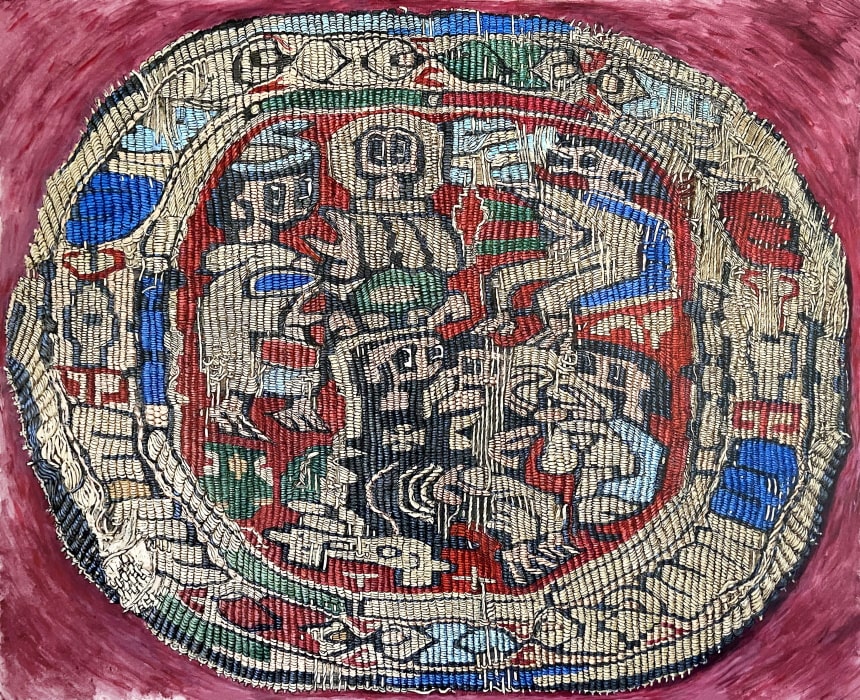
The juxtaposition with original textiles from antiquity creates a fascinating field of tension between evidence of a past culture and contemporary art. Due to the size of the pictures, visitors cannot avoid taking a closer look at the small-format textile fragments. This offers the opportunity to experience them anew as masterpieces of handicraft and to learn about their everyday function and usability in the society of the time.
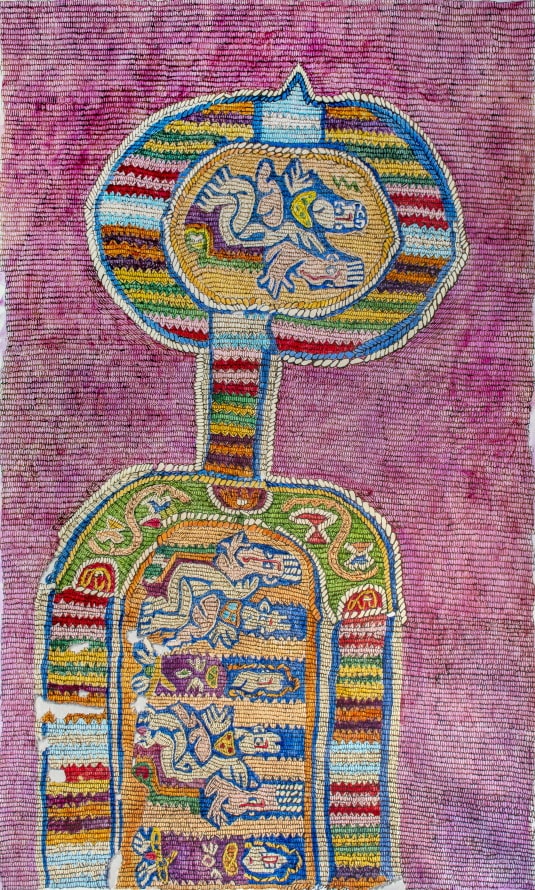
The exhibition is intended to contribute to social discourse and to encourage people to engage with the long history of antique garments and furnishing textiles – from their production to their use as museum exhibits.
“Think Big! Gail Rothschild Portraits Late Antique Textile Finds from Egypt” is curated by Cäcilia Fluck, research assistant, and Kathrin Mälck, textile conservator at the Sculpture Collection and Museum of Byzantine Art.
The exhibition is accompanied by a catalogue published by Schnell & Steiner, Regensburg.
WHEN?
Friday, 1 July until Monday, 31 October 2022
Special opening hours: Tue – Sun 10 am – 6 pm
WHERE?
Museumsinsel Berlin, Bode-Museum
Am Kupfergraben, 10117 Berlin-Mitte


